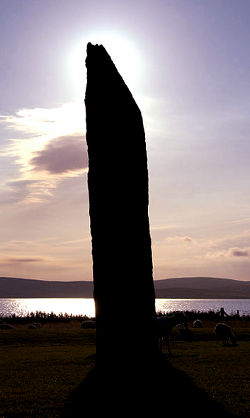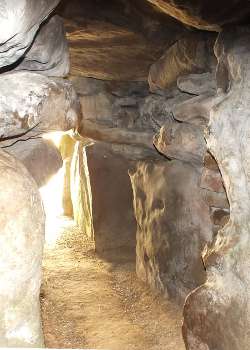

Prehistoric Britain
Britain's finest prehistoric sites
About-Britain.com
- a thematic guide to Britain
- Discover Britain
- Essential
information
- Accidents and emergencies
- Pounds and pennies
- Hotel search
- Budget tourism - Britain on the cheap
- Online shopping from the UK
- Driving in Britain
- Low-cost car-hire
- Travel by train in Britain
- Visitor accommodation
- Hotels in London
- Britain's main attractions
- Food and eating in Britain
- Christmas in Britain
- English pubs
- Places
to visit
- Britain's main attractions
- Visiting London
- London for free
- Getting round in London
- Shopping in London
- More great English cities
- Oxford and Cambridge
- Tourism by region
- Discover southeast England
- Discover central southern England
- The West of England - Gloucestershire to Dorset
- The Westcountry - Devon and Cornwall
- Sites & heritage in the East of England
- About Scotland
- Attractions by theme
- Issues & institutions
Youare
here: About
Britain ›
Tourism ›
Prehistoric Britain
The
best preserved and most interesting prehistoric sites in Britain
| Index | Prehistoric heritage | Ten best prehistoric sites | Timeline of prehistory |
Places
to stay in the UK
Hotels,
apartments and other accommodation at best rates
from Booking.com
:

Stonehenge
:

Avebury
Oxfordshire
Dartmoor
Llandudno
Cumbria
Dorset
Orkney
Before the Romans came..... Britian's prehistoric heritage
 The
Uffington White Horse, seen from the air. Photo NASA
The
Uffington White Horse, seen from the air. Photo NASAMen and women had been living in Britain for thousands of years already; and over the centuries before the expansion of the Roman Empire, the islands of Britain had been home to people who lived in communities, exploited the islands' mineral resources and traded them internationally, and built some of the greatest surviving monuments of Prehistoric times.
While some of the most impressive of these are situated in the remotest areas of Britain, the islands off the Scottish coast, others are in the south of England, and easily accessible from London. Our prehistoric ancestors preferred to live in hill areas and on islands, more protected than the densely forested flat lands; thus, the areas of Britain that are most remarkable for their prehistoric sites are the hills of the southwest, the mountains of the north, and the highlands and islands of Scotland.
Ten of the best prehistoric sites in Britain
Seven of the best prehistoric sites in England and Wales
| Name & location | Rating (/5) |
Highlights |
| Stonehenge Near Salisbury, Wiltshire. 70 miles sw of London |
5 | UNESCO world heritage site. The most world's most iconic and enigmatic prehistoric site; a great double stone circle, orientated to the sunrise on the Summer solstice, built with massive hewn rocks brought from 100 miles away. Museum and visitor centre . ► Tours and tickets |
| Avebury
and
Silbury Near Marlborough, Wiltshire - 70 miles west of London |
5 | UNESCO world heritage site.. Britain's second largest double stone circle, plus stone alignments, West Kennet long barrow, and the massive Silbury Castle, a round artificial hill. Museum. |
| Uffington
White
Horse Near Abingdon,
Oxfordshire - 65 miles west of London |
4 | There are many white horses carved on hillsides in England. This one is known to be of prehistoric origin. Other white horses are, or may be, much more recent. Free access; visitor car park. |
| Brisworthy
stone circle and Ringmoor Stone row Dartmoor, Devon. Brisworthy, 10 miles northeast of Plymouth |
3 | This is the largest and most interesting among several prehistoric sites on Dartmoor. Free access. |
| Great
Orme mines Great Orme Head, Llandudno, North Wales. 55 miles west of Liverpool |
3 | Visit the world's best example of a Bronze Age mine - where men dug out valuable copper ore 4000 years ago. Underground visit. Visitor centre. |
| Castlerigg
stone circle Cumbria, near Keswick. English Lake District. 300 miles n-w of London |
3 | Neolithic stone circle from 3000 BC, in a dramatic mountain environment. Free access |
| Maiden
castle Near Dorchester, Dorset. 140 miles southwest of London |
3 | Massive Iron Age hill fort, covering 19 hectares (47 acres). Built 600 - 450 BC. The hilltop is surrounded by defensive lines of ditches. Free access. Visitor car park. |
Three of the best prehistoric sites in Scotland
| Name & location | Rating (/5) | Highlights |
| Skara
Brae Orkney Islands - 50 miles north of the Scottish mainland. Ferries from Gill's Bay, Scrabster or Aberdeen. |
5 | UNESCO
World
Heritage site. Amazingly well preserved neolithic village settlement, from about 3000 BC. The site includes several houses, with stone furniture and fittings. The village owes its conservation to having been covered in stones and sand for over 2000 years. Visitor centre. |
| Callanish
standing stones Isle of Lewis,
Outer Hebrides. Off the northwest coast of Scotland. Ferry from Ullapool |
4 | Dramatic
circle of tall standing stones, the
tallest central stone being 4.8 metres high. Erected in the third
century BC. There are also alignments of smaller stones. The
site
included a burial chamber. Visitor centre, free admission, free parking. |
| Orkney
stone
rings. Brodgar and Stenness Orkney Islands - 50 miles north of the Scottish mainland. Ferries from Gill's Bay, Scrabster or Aberdeen. |
4 | Part of the Orkney Neolithic UNESCO World Heritage site. Large circle of tall standing stones, accompanied by several burial mounds. The ring at Brodgar is over 100 metres in diameter; the four massive standing stones at Stenness are up to 6 metres tall. Free entry |
► And further afield: Best prehistoric sites in France
Prehistoric timeline - ancient civilisations in Britain
Dates before the first visit of Julius Caesar are approximate.- 180,000 BC - The British Isles become separated from the continent of Europe, as the English Channel opens up
- 4000 BC - Beginning of the Neolithic or late Stone Age, and the start of agriculture.
- 3000 BC - Building of Stonehenge, and settlements such as Skara Brae
- 2000 BC - Start of the Bronze age ; men in Britain begin to mine for tin and copper, both of which are plentiful in Britain. The mine at Great Orme dates from this period.
- 1400 BC - The late Bronze age. People in Britain build settlements, and erect more stone circles nearby, probably for religious or ceremonial rites.
- 800 BC - Start of the Iron Age in Britain. Hill forts and defensive positions are established, as the islands are now inhabited by different tribes of Celtic and Germanic origin
- 55 BC - Julius Caesar visits Britain. From then on, the Romans are enemies or allies of the different tribes of Britain. The Romans are commercially interested in Britain's mineral resources.
- 43 AD. Roman invasion of Britain.
Above: Stonehenge
Long
before the Romans conquered Britannia, the British Isles had been
inhabited by civilisations often referred to collectively as "Ancient
Britons". Britain was an attractive abode for early civilisations; its
climate was not harsh, and its hills provided the metals that were the
wealth of the Bronze Age and the Iron Age. Some of the incredible
building works of Prehistoric Britain can still be admired today.

One of the great standing stones at Stenness, on the Orkney islands - part of the Orkney prehistoric World Heritage site

Inside West Kennet Long Barrow, near Avebury